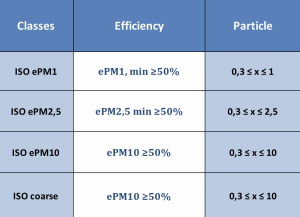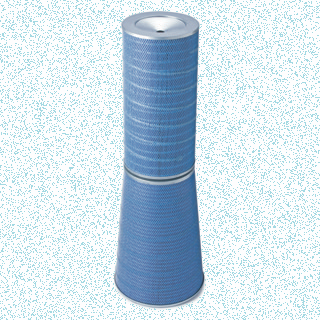
A uniform rating standard for the efficiency of air filters phases in this year. ISO 16890 from the International Standards Organization (ISO) applies to filters used to manage pollutants (Classes G1 to F9).
By Jason Tiffany
It took effect in December of 2016 and becomes the world’s officially recognized standard this June, in place of separate standards used in Canada, Europe and the U.S.
Filter “efficiency” is the percentage of particulates captured from the dirty air entering the element. The new ISO testing methodology is designed to better represent a realistic outdoor environment and uses the same particle sizes referenced in standards of the World Health Organization (WHO) and Environmental protection Agency (EPA).
The power industry, where gas turbines require high volumes of clean inlet air, is an example of one major industry where the change is welcome. Filter suppliers and users were struggling to reconcile two very different regional standards for air filter efficiency that prevailed for decades: European Normative 779-2012 in Europe; and ANSI/ASHRAE Standard 52.2 from the American Society of Heating, Refrigeration and Air-Conditioning Engineers (ASHRAE) in the U.S. Asia and the Middle East have used both those standards, in addition to others. While all the standards try to rate performance, they do so in very different ways, and conversion tables have been guesswork at best.
ISO 16890 changes how efficiency is measured and reported by focusing on particulate matter (PM) classes, a framework that aligns with the way WHO and EPA classify hazards to human health. In a test lab protocol, the filters are exposed particulates in a broad range of micron sizes. The test then measures average capture in three specific ranges: PM1, PM2.5 and PM10 (also referenced as ePM1, ePM2.5 or ePM10). Filters qualify for one of the three efficiency classes if they demonstrate, on average, at least 50 percent efficiency. If a filter fails to do so in any category, it is designated as Course. A filter’s exact efficiency is reported next to its classification—PM1 65%, for example.

ISO 16890 measures average capture in three specific ranges. Filters qualify for one of those three efficiency classes if they demonstrate, on average, at least 50% efficiency. If a filter fails to do so in any category, it is designated as coarse.
Filter testing will need to change most dramatically for Europe, where the standard used only one particle size, .4 microns. In the U.S., ASHRAE 52.2 has tested for a range of particle sizes, but some consider its rating scale, Minimum Efficiency Reporting Values (MERV ratings), imprecise. While a higher MERV rating is intended to correlate with better performance, some data have shown a negligible difference between filters rated MERV 8 and 11, and a big performance jump between filters rated MERV 11 and 13. The ISO rating method is designed to avoid this relative scale by reporting absolute values.
Fully adopted, the unified ISO 16890 rating system will benefit the international filter market in three important ways:
- Filter users will be able to compare filters apples-to-apples in buying decisions. The standard gets users and manufacturers speaking the same language and helps them collaborate across borders.
- The ISO standard represents real-world environments more closely. The test method and straightforward ratings give users a more precise way to select filters for specific climates, applications, or cost parameters.
- The test will bring reported product performance up to date. To earn an ISO 16890 rating, manufacturers need to get their filters retested—a significant investment. Buying an ISO-rated filter, a customer has assurance that its efficiency has been recently verified. A MERV rating, on the other hand, could be 15 years old.
The adoption of ISO 16890 is voluntary; but practically speaking, companies doing international business will need to incorporate it solely, or alongside other test methods they prefer. While some manufacturers may find financially or logistically challenging to have their filters retested in an independent lab, more established filtration manufacturers are well into the conversion. Donaldson Company, for example, has completed ISO testing on elements used in 80 percent of its customers’ applications—planning to proceed to the rest as customers request or require. The company plans to classify filters under all major rating schemes until ISO becomes predominant in the market.
For more information on ISO 16890, visit www.iso.org/standard/57864.html
Jason Tiffany is Product Development Team Lead in the Gas Turbine Systems (GTS) division of Donaldson Company, represented in Canada by Wajax. He has been a manufacturing and product development engineer for 12 years and holds a Master’s degree in Engineering Management.
Print this page
